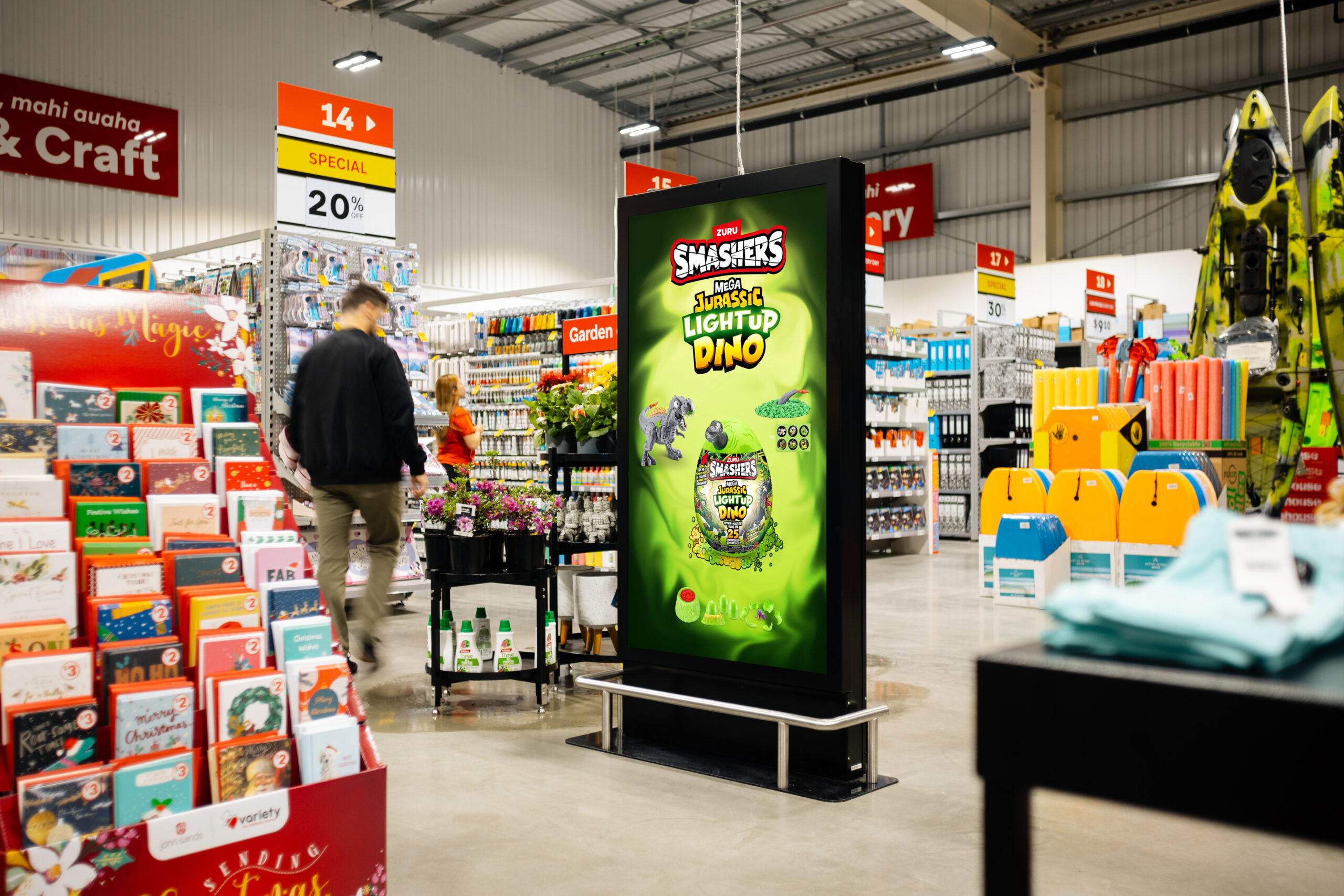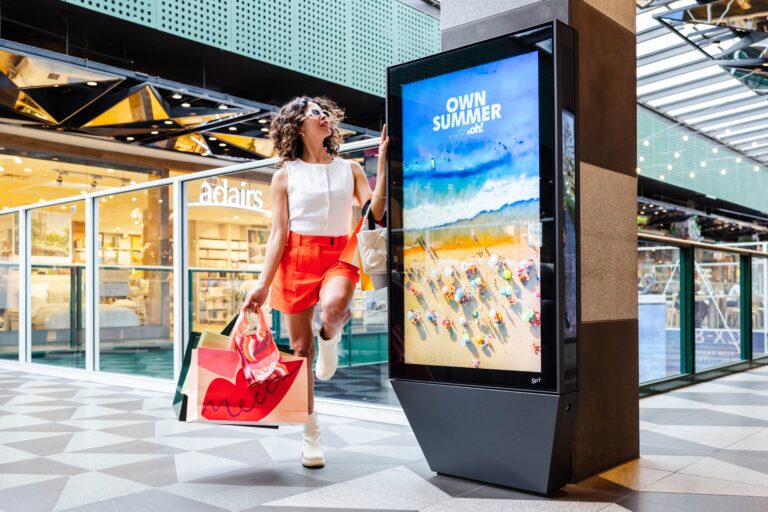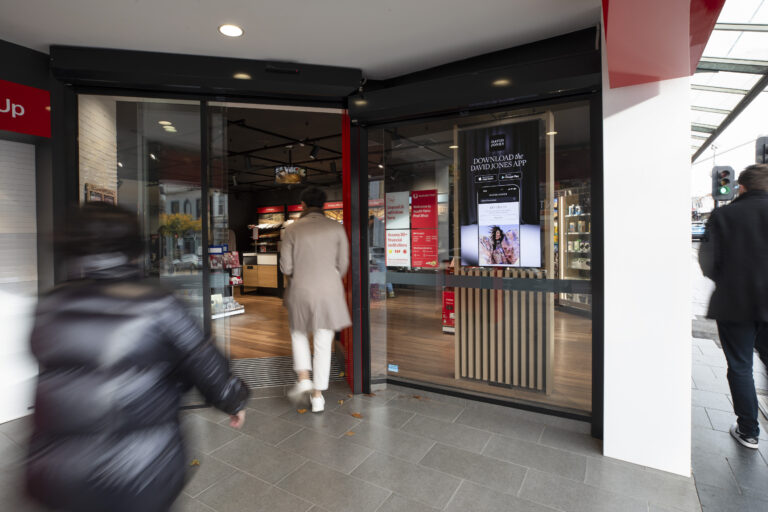Retail media networks (RMNs) present a significant opportunity for retailers to maximise ROI by monetising their digital and physical platforms. As the retail media market grows—expected to reach $3 billion in Australia by 2027—retailers can leverage RMNs to create new revenue streams, enhance customer engagement, and boost overall profitability. In this guide, we’ll explore how retailers can successfully implement and optimise their retail media network strategies to unlock the full potential of this rapidly expanding market.
What is a Retail Media Network?
A retail media network is a digital advertising platform that allows retailers to monetise their website traffic, customer data, and online presence by serving targeted ads within their own digital and physical ecosystem. In a store environment, it also includes an instore screen network, and with reo-powered by oOh!– access to audience extension (AXT).
Here’s a breakdown of the concept:
Traditional retail advertising involved physical promotions and broad digital campaigns. The shift to digital has driven the need for more precise targeting, leading to the emergence of RMNs. Retail media is now an $850 million market for Australian retailers and could reach $3 billion by 2027, according to PwC’s Global Entertainment and Media Outlook 2023 report.
An RMN provides a structured framework for retailers to sell advertising space on their platforms. It leverages first-party data collected from shopper interactions and transactions to deliver highly targeted advertisements.
Retail Media Networks v Retail Media Platforms – What’s The Difference?
A retail media network (RMN) refers to the broader ecosystem where retailers offer advertising opportunities across their digital and physical channels, such as websites, apps, email marketing and in-store displays. It involves a collection of advertising spaces that brands can use to target the retailer’s audience. On the other hand, a retail media platform is the technology or software that powers and manages these advertising efforts. It enables retailers and advertisers to create, optimise, and track campaigns within the retail media network. While an RMN represents the advertising space and strategy, the retail media platform is the tool that facilitates its execution.
Types of Retail Media Networks
There are two main types of retail media networks: in-house and outsourced. In-house RMNs provide retailers with full control over the platform, data, and advertising partnerships, but they require significant investment in technology, infrastructure, and expertise.
Third-party RMNs, on the other hand, offer a streamlined setup, allowing retailers to quickly tap into established networks of advertisers with minimal effort. These networks are managed externally, freeing retailers from the complexities of running the system themselves, while still benefiting from additional revenue opportunities and access to advanced tools and strategies.
The Benefits of Retail Media Networks
Implementing an RMN can bring numerous advantages across the ecosystem:
Benefits for Retailers
- Enhanced Customer Experience
- By utilising targeted advertising and personalised promotions, retailers can create a more engaging and relevant shopping experience. This leads to higher customer satisfaction and loyalty, as shoppers feel understood and valued. Improved experiences can also drive repeat business and positive word-of-mouth recommendations.
- Drive Incremental Revenue
- Retail media networks provide an additional revenue stream through advertising, allowing retailers to monetise their digital platforms. By selling ad space on your omnichannel assets, you can create additional income streams, driving revenue growth and positively impacting EBITDA.
- Collaborations with brands and advertisers can lead to mutually beneficial arrangements.
- Stronger Supplier Partnerships
- Retail media networks foster closer relationships with brands, leading to collaborative marketing initiatives and shared insights.
- Enhanced Customer Insights
- Retailers gain access to valuable data on consumer behaviour, preferences, and trends, enabling more targeted marketing efforts.
- Improved ROI and Performance Metrics
- RMNs provide robust analytics to track ad performance, including metrics like ROAS, iROAS, Sales Uplift, New to Brand, New to Category, Incremental Revenue and more.
Benefits for Brands
- Targeted Advertising
- Brands can effectively reach specific audience segments by targeting their purchasing behavior and demographics, which enhances campaign performance. Customers are more responsive to advertising and brand messages when they’re already in a shopping mindset, leading to higher engagement and conversions
- Enhanced Brand Visibility
- Advertising on a retailer’s platform allows brands to increase their visibility where consumers are already shopping.
- Performance Measurement
- Brands can track the performance of their ads in real-time, gaining insights into ROI and optimising future campaigns.
- Access to First-Party Data
- Retail media networks provide brands with valuable first-party data that enhances their understanding of consumer preferences.
- Increased Sales
- Well-placed ads can lead to immediate sales, driving revenue for both the brand and the retailer.
Benefits for Customers
- Personalised Shopping Experience
- Customers receive tailored advertisements and recommendations based on their shopping habits and preferences, enhancing their overall shopping experience.
- Relevant Promotions
- Retail media networks often deliver relevant deals and promotions, helping customers save money on products they are interested in.
- Easier Product Discovery
- Customers can discover new products and brands seamlessly through targeted advertising, enhancing their shopping journey.
- Convenience
- Retail media networks streamline the shopping process by bringing relevant products to the forefront, reducing search time and enhancing convenience.

Key Features to Consider When Building a Retail Media Network
Retail media is an ecosystem – not a channel. Building the right RMN for your business involves evaluating various features that align with your business needs. Here are key factors to consider:
Business Case
Developing a strong business case is crucial for aligning stakeholders and securing investment. This involves outlining the objectives of the retail media network, identifying potential revenue streams, and demonstrating how it will enhance customer experience and engagement. A clear business case provides a roadmap for implementation and helps measure success against defined KPIs.
Audit & Evaluation of Assets
Conducting a comprehensive audit of existing digital assets is essential. This includes assessing available advertising spaces, customer data, and marketing tools. Understanding what assets are already in place allows retailers to leverage their strengths and identify gaps that need to be filled. This evaluation is foundational for designing a network that effectively utilises current resources.
Existing Tech Stack & Integration Requirements
Analysing the current technology stack is vital to determine compatibility with the new retail media network. This includes evaluating existing ecommerce platforms, customer relationship management (CRM), CDP and analytics tools. Ensuring that the tech stack can support the integration of new advertising technologies to facilitate smoother operations and data flow.
Who are the Key Partners Required?
Identifying the right partners—such as advertising technology vendors, data providers, and creative agencies—is crucial for building a successful retail media network. Strategic partnerships can enhance capabilities, provide additional resources, and drive better ad performance. How much expertise do you currently have inhouse? How does the creation and management of a retail media network compete with existing business priorities?
Going it alone might not be the best decision for your business, or it may not be. Going it alone requires significant investment in technology, infrastructure, and expertise. Working with a partner, however, significantly reduces the cost of entry and associated risks. You’ll also be up and running faster and seeing results sooner.
Consider which model is best for your business right now, and into the future.
Insights, Measurement & Reporting
Gathering actionable insights from customer data is essential for targeted advertising and personalised marketing. This involves analysing consumer behaviour, preferences, and trends to inform advertising strategies. Establishing clear measurement protocols is vital for evaluating performance, including defining key performance indicators (KPIs) that align with business objectives. Implementing comprehensive reporting systems facilitates tracking and provides transparency to stakeholders, helping refine strategies over time. Together, these elements ensure that the retail media network delivers measurable results and evolves to meet changing market conditions.
Learn more about how reo can help you build, scale and monetise your retail media network.
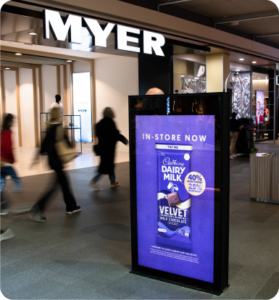
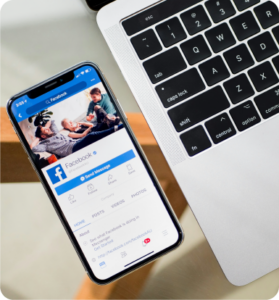
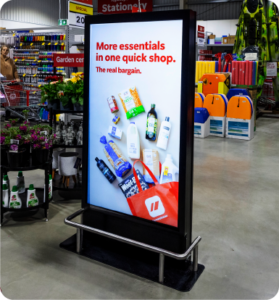
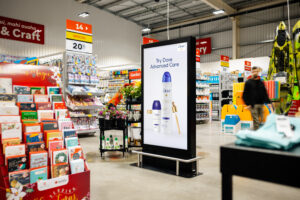
Common Challenges and How to Overcome Them
While RMNs offer great benefits, they also present challenges. Here’s how to tackle them:
- Data Privacy and Security
- To maintain customer trust, ensure compliance with data protection regulations like GDPR and CCPA. Implement strong security measures to safeguard customer information.
- Integration Issues
- Leverage technical support from your RMP provider to overcome integration challenges. Conduct thorough testing before launching to identify and resolve potential issues early on.
- ROI Measurement
- Use accurate tracking methods to effectively measure ROI. Regularly review performance data and adjust your strategies to optimise results and ensure continued success.
In conclusion, a retail media network represents a significant opportunity for retailers aiming to elevate their advertising strategies, boost revenue, and gain deep customer insights. Although the industry is still evolving, the potential benefits for retailers and brands willing to embrace this approach are substantial. By leveraging the capabilities of a retail media network, retailers can position themselves for success in a competitive landscape, maximising their return on investment and driving long-term growth.
Ready to take your retail advertising to the next level?
Reach out to the team today:
oOh!media collects your personal information in order to provide and market services to you. This may require us to share your information with our related companies and third parties that help deliver our services (including Marketo) in Australia. For more on how we handle personal information and your access, correction, complaint and opt-out rights, see our Privacy Policy or contact us.
